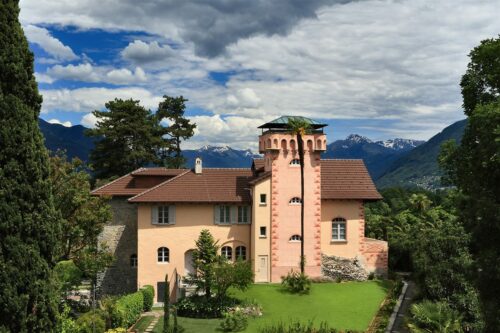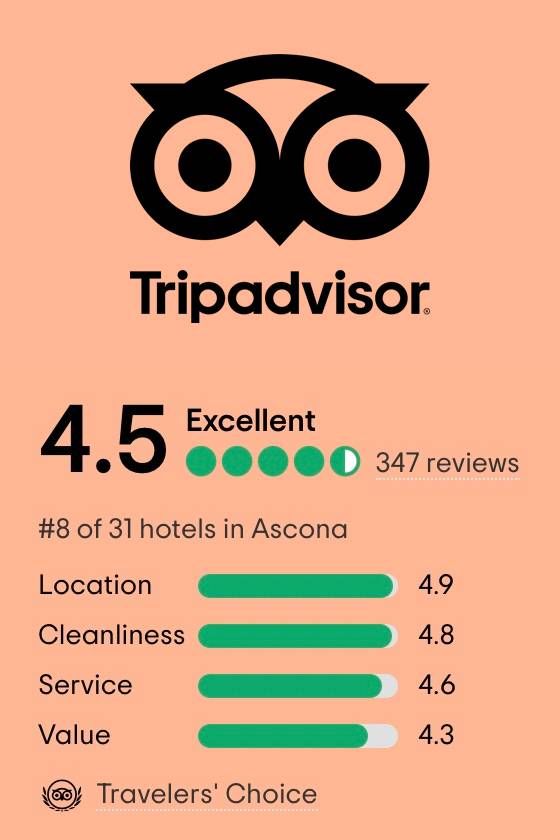“Let’s go for a coffee” is one of the most common invitations in Ticino. According to statistics from the International Coffee Organization, Switzerland is one of the countries with the highest coffee consumption in the world, with an average of 3 coffees per person per day. It is also known that coffee in Ticino has that certain “something”. The secret? We asked our local roaster.
The secret of an excellent coffee is not only in its preparation. The quality of the beans, the roasting process and the blend are crucial to its success. One of the most famous Ticino roasters is located in our region. Ascona-Locarno’s own brand of coffee has been around since 1965 and is available in 13 different blends with beans from all over the world.
Brazil is one of the countries where the beans for the blends come from, but not only: other countries of origin include Cameroon, Colombia, Guatemala, India, Tanzania, Mexico and Panama, to name a few. The way the coffee is harvested also plays an important role in the quality that ends up in our cup: Hand harvesting is the only method that guarantees the health of the plant – without damage – and the quality of the coffee, since only the ripe beans are picked.
Good coffee is as much a part of the Italian way of life as pasta and Chianti. Since the brown stimulant came to Europe about 500 years ago, a coffee culture has developed in Italy that is second to none. Here you can learn the most important facts about its unwritten laws and typical habits of Italian coffee drinkers.
1. whoever says “caffè” means espresso
If you order “caffè” in Italy, you get: Espresso. If you want a double, order a “caffè doppio”. You will not find the typical German filter coffee, some tourist places offer it as “caffè tedesco”. If you feel like a big cup of coffee, order either a “caffè americano” (espresso with hot water) or a “caffè lungo”, which is an espresso prepared with twice the amount of water.
2. who drinks coffee never chooses paper cups
Coffee from paper cups? Only in the worst case of emergency! Italians drink their espresso from porcelain or ceramic cups, and some coffee specialties such as latte macchiato are served in glasses. For them, coffee enjoyment goes hand in hand with a certain style – and cardboard or plastic cups are not intended for the time being. Typical Italy.
3. Those in a hurry drink their coffee standing up
The habit of drinking coffee in the street is as far from Italians as paper cups. If they are in a hurry and feel like coffee, they quickly drink an espresso standing up in a bar. That’s why the bars and cafés are rarely crowded.
4. Those who have visitors offer coffee – always!
“Caffè?” Whether at home or in the office, offering a visitor a coffee is the first and simplest gesture of hospitality in Italy. After all, a shared chat over a cup creates a familiar atmosphere, which is important for successful personal and professional relationships. If, on the other hand, the guest is not offered coffee, he wonders – at least as an Italian – whether he is welcome at all or has done something wrong.
5. if you drink cappuccino, you are having breakfast
Cappuccino, latte macchiato & Co: Italians usually drink coffee specialties with milk at breakfast or in the morning. They are considered to be satisfying drinks. By the way, it is particularly frowned upon to have a cappuccino directly after a meal. Espresso, on the other hand, is always good. Both after meals and at any time of the day or night. A compromise for those who don’t want to do without a little milk in their coffee is the “macchiato”. , that is, an espresso stained with a little milk.
6. who drinks coffee, may let others wait
Coffee always has priority. No matter how significant a matter you want to talk to someone about: In any case, if someone says they need a coffee, it’s more important! So be patient with your request until the other person has had their coffee – or if in doubt, just have one with them!



